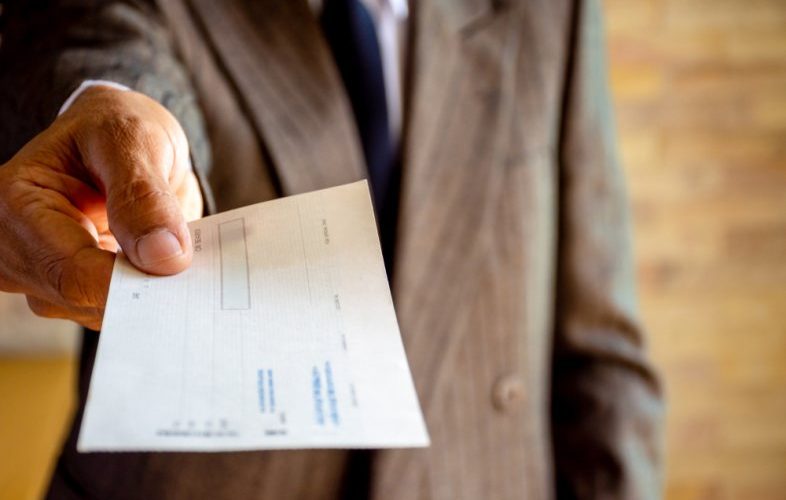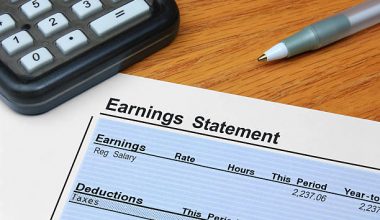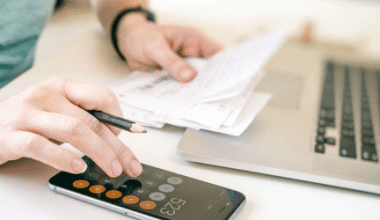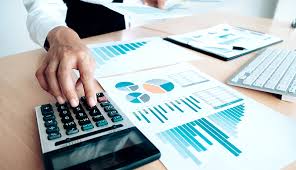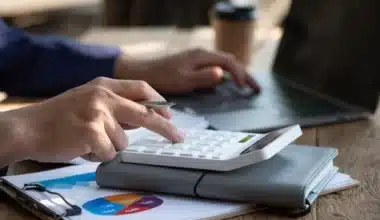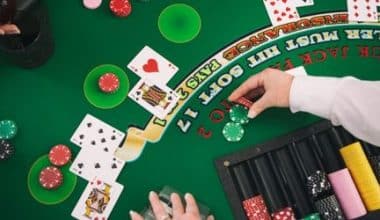You may be extremely familiar with checks if you have a bank account. When we take money from our bank account, we usually utilize checks. When you submit a check, the bank will pay the individual in whose name the check was written a certain amount of money. However, are you aware of the counter-check and how it works? Don’t worry; this article will answer that and also inform you about all you need to know about counter checks bank of America.
What Is a Check?
A check is a written, dated, and signed document that instructs a bank to pay the bearer a certain amount of money. The payor, or drawer, is the person or entity who writes the check, whereas the payee is the person or entity to whom the check is addressed.
Checks can be deposited or cashed. The monies are from the payor’s bank account when the payee presents a check to a bank or other financial institution for negotiation. It’s another way to tell the bank to transfer money from the payor’s account to the payee’s account or vice versa. Checks are usually against a checking account, but they can also be transferred money from a savings or other account. The spelling “cheque” is in various places of the world, such as Canada and England.
How to Write a Check
According to the most recent Federal Reserve figures, Americans still write a lot of checks 14.5 billion worth $25.8 trillion in 2018. However, before there were so many options for payment, we wrote a lot more checks more than 40 billion in 2000, worth roughly $40 trillion.
#1. Write the Date in the Top Right Corner
Make sure you fill in the entire month, day, and year on the “Date” line. You can write the date in its whole (for example, September 1, 2020) or in numbers (9/1/20 or 09/01/20).
#2. Enter the Name of Your Recipient
Write the entire name (first and last) of the person or the proper name of the organization or business you’re paying by check on the line “Pay to the Order of.” Make certain you spell it correctly!
#3. Enter the Dollar Amount
Write the precise amount of the check payable to the right, on the line with the dollar sign. Don’t estimate or round up. Instead of writing a check for $123.00, write a check for $122.51.
#4. Repeat the Dollar Amount, Written Out
Repeat the amount of the check on the line beneath your recipient’s name, but this time write it out completely. For example, “One hundred twenty-two and 51/100” should be as “One hundred twenty-two and 51/100.” (with the change amount as a fraction). If the check is for $200 and it’s an even number, simply write “Two Hundred.” If there is still vacant space on the line, take the following precaution: To prevent someone from adding new numbers and changing the amount, draw a single line to the end of the field.
#5. Fill Out the Memo Space (Optional)
Your check has a slot in the bottom left corner where you can inform the recipient what this payment is for. “Air Conditioning Repair,” “Pet Grooming,” “Congratulations on Graduation,” and so on. If you’re sending payments for utilities, rent, or a mortgage, the firm or property manager may ask you to provide your account number in the “Memo” area for identification purposes.
#6. Sign Your Check
If you don’t sign your name on the line in the bottom right corner, your check is invalid. Remember not to sign your name on the check’s back; that spot is for your receiver to sign. The amount of the check will be withdrawn from your checking account when the recipient does and the check is cash.
What Is Counter Checks?
Counter checks are so named because they are filled out and submitted to the teller at the bank’s counter to withdraw money. Simply put, counter checks are checks written by an account owner to anyone who will present them at the bank. That is, the person withdrawing the check is the account owner from whom the money will be drawn.
A counter-check is similar to a regular form; it lacks the complicated security features included in personal or corporate checks. A counter-check will be received by an authorized bank agent in the presence of the authentic account holder, which is why there is less security. The cashier will examine your signature, account number, and signature when you submit a counter-check. The cashier will verify that you are the rightful owner. The counter check can only be the account holder to withdraw money; it is not available to third parties.
Overview
Counter checks are named for the fact that they are usually placed at the cashier’s desk (counter), filled, and delivered to the teller to withdraw money. Because they will be by an authorized bank agent in the real physical presence of the account holder. These checks are usually simple forms with none of the elaborate security safeguards that personal or corporate checks have.
Typically, the cashier will examine the signature and account information. And a personal photograph of the account holder to ensure that the person making the withdrawal is the rightful owner. Under normal conditions, these withdrawals cannot be for a third party because of the high risk of fraud.
In modern times, the phrase “counter check” is also used to refer to a personal check written by the teller with all of the client’s account information and intended to be used as a regular check if the customer ran out of checks or misplaced his checkbook. Because counter-checks are not a common service, the holder may be charged a small price.
How Counter Check Work
Checks don’t sit well in today’s age of rapid access: When you run out, you’ll need to order them several weeks ahead of time so that they can be printed with your information. If you’re in a hurry and have run out of checks before your fresh ones come. Your bank can usually provide you with several fast counter checks to cover your interim needs.
Counter checks can be in print by a teller or a personal banker. They will contain your account information and will function similarly to regular checks. In that familiar computerized MICR type, your ABA routing number and account number appear at the bottom of each check. Some banks include your name and address as well. But counter checks are typically pretty simple, and shopkeepers can usually tell when you’re using one.
How to Get Counter Checks
To get a counter check, go to your bank or credit union’s branch. Call beforehand to make sure counter checks are accessible before going to the branch. Learn about the procedure and whether you’ll need to employ a specific branch. Of course, because there is no branch to visit. You won’t be able to get counter checks if you use an online-only bank.
When you arrive at the branch, ask the teller or personal banker to print the checks. Verify your identification, and complete any other processes the bank requires. In just a few minutes, you should have your checks in your hands.
Counter Check Bank of America
Yes, at the Bank of America you will have access to counter checks. Nevertheless, at Bank of America, your counter checks are only valid for as long as you do not have a custom check. Once you have received your customs check, the counter check is invalidated. The customer care team can answer questions about the validity of your temporary checks at any of the Bank of America branches or through their online agents.
Therefore, do not be afraid to consult or ask about any issue regarding the Bank of America counter checks.
Getting a temporary check from Bank of America is a simple process that will just take a few minutes if you cooperate.
When the BoA agents ask for your proper identification documents and application costs. Cooperation indicates you are ready and willing to provide them.
After you open a bank account with Bank of America, a temporary check will be yours.
That implies you’re probably being duped if you’re asked to pay fees without first opening an account with BOA. Please be careful; some individuals might take advantage of you to steal your money. Only give your identification documents and application fees to the BoA agent or worker with a BOA worker’s badge.
How Long is a Counter Check Good For?
Temporary checks are known as counter checks, and most people only use them temporarily while they are waiting for their official checks to arrive in the mail. A bank will only issue a limited number of counter-checks at once, and most banks will charge a fee for the use of a counter-check.
As soon as the legitimate checks you ordered from your bank or credit union arrive, you should get rid of any counter checks you still have in your possession and order new ones. Even while these checks do not in fact become invalid once they have been written, utilizing a counter check after having obtained personal checks may give the appearance of being suspicious.
What Can I Use Instead of a Counter-check?
There are other payment methods that are more generally accepted. This is nevertheless helpful given that the number of businesses and establishments that accept counterchecks is relatively low. Although the majority of them still demand users to pay fees, they provide cash that is totally guaranteed, making them more appealing to beneficiaries.
What Checks Cannot Be Cashed?
Checks such as traveler’s checks, savings bonds, checks from unknown banks or international banks (not covered by the system of the Federal Reserve), checks without an endorsement or with dual endorsements, copies of checks, and checks made out to people who are not signatories on the account to which the check is being deposited are not accepted. Checks can also be returned to the customer if they do not meet the criteria listed above.
What App Can I Cash a Check Without ID?
Ingo Money is currently one of the most well-known and widely used check-cashing apps available. The processing of your check will be completed in a matter of minutes at most. The Lodefast Check Cashing app and the Brink’s Money Prepaid app are two examples of well-known apps. In addition to that, you also have the option of signing the check over to a reliable individual.
Bank of America Counter Check Fees
You may or may not want to pay fees for the counter or temporary check, depending on the BoA branch.
To be cautious, you should always inquire about temporary check costs from your specific bank ahead of time. This is basically to see whether or not the branch would charge you the counter check fees.
Individuals have been away by BOA agents in several cases for arriving at the bank to pay fees for temporary check fees.
Do not be away because it will be a waste of time; instead, make an early inquiry using online channels such as the BoA Facebook or Twitter accounts, or by calling the customer service team.
Counter Checks: Major Limitation
Although counter checks have been in use for several years, they have a major limitation that online and card transactions have overcome. You cannot use the counter check to buy any items from someone who doesn’t know and trust you. They are not official checks and are therefore not accepted by businesses.
What Do You Need to Get a Counter Check?
The initial step is to determine the precise sum that will be written on the check. After the cashier’s check has been printed, the amount cannot be altered in any way. Therefore it is important to check it twice and jot it down if required. You must also be in possession of the name of the recipient, regardless of whether it is a person, a store, or any other form of business.
Are Counter Checks Free?
They can be printed out and used right away; additionally, they serve the purpose of a personal check. However, there is a cost associated with this check, and it has a lower likelihood of being accepted by businesses compared to ordinary checks. Cashier’s checks, certified checks, money orders, and online banking are among the options that can be used as substitutes for counter checks.
How Can I Cash a Check Without Depositing it?
You can cash it in at the bank that issued it (this is the bank name that is pre-printed on the check). You can cash a check at any store that is authorized to cash checks (discount department stores, grocery stores, etc.) Put the check through a financial institution that can cash checks. Make a deposit using an automated teller machine (ATM) onto an account associated with a checkless debit card or a pre-paid card.
What You Should Know About Bounced Checks
Bypassing checks has become much more convenient. Not only have ATM and debit cards become more common, but online banking and payment apps like Zelle and Venmo are no longer for the technology.
When you compare a few taps on your phone to write a check assuming you remember where you put your checkbook there’s no contest.
However, as the above figures show, if checks are disappearing, it is happening gradually. As a result, you’ll need to know how to properly write checks. Let’s take it one step at a time.
FAQs On Counter Checks
Is a counter check the same as a personal check?
Definition: A counter check is a blank form provided by banks, normally at cashier’s booths, to withdraw money from a personal account. It serves as a personal check but it is drafted to the client itself to extract money from his account.
Are counter checks legit?
Counter checks, often called starter checks, are given to customers by bank tellers. They are primarily used when a person opens up a new checking account. … Counter checks have a high rate of fraud, and institutions should be careful when accepting them.
Can you give someone a counter check?
If the person lacks the check and needs one immediately, the bank can give him a counter check. The customer’s account number and bank’s routing number are written on the checks, but there is no name of the customer and address written on the book.
Related Articles
- How to Cash a Check: Simple Step-by-Step Guide
- Check Cashing Services and Stores: How They Work
- KITCHEN APPLIANCES: Top 10 Must-have Small kitchen appliances for your business
- BACK OF CHECK: How to Sign, What to Write & Wrong Endorsement Solutions
